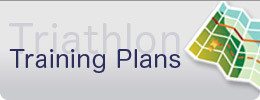A Run Field Test to Estimate Lactate Threshold
“The body conforms and adapts to the intensities and directions it is habitually subjected to.”— Wolfe’s Law
In triathlon and other endurance sports, training intensity – or how hard the effort is – is typically described by terms such as aerobic, sub-threshold, lactate threshold, VO2 and recovery. Training at different levels of intensity stimulates different training responses in the body.
As a triathlon coach, one of the most frequent questions I get is, “How hard do I train?” Without an easily quantifiable measurement of training intensity while exercising, it can be difficult to train appropriately.
Training zones are a way to estimate levels of intensity in order to get a desired training response. Training zones can be calculated based off of lactate threshold. For the purpose of this field test, I’m defining lactate threshold as the intensity above that which lactic acid begins to rapidly accumulate in your working muscles — your muscles will feel heavy with a burning sensation (from acidosis) and your breathing becomes labored. It’s a hard, sustained effort that you can maintain for about 30 minutes.
This is a simple 30-minute test that you can do for estimating your heart rate (LTHR) and pace (LT-Pace) at lactate threshold. With LTHR and/or LT-Pace, you can then easily calculate your training zones.
Please note that if you are new to triathlon training, have been inactive for a prolonged period of time or are not yet able to maintain a sustained 30 minute effort, we recommend that you use Rate of Perceived Effort (RPE) during the first 4–6 weeks of your training program prior to performing a field test.
Preparation for Test
- Make sure that you are well rested from training before the test.
- Any workouts the day before the test should be very light.
- Don’t eat or consume caffeine for three hours before the test and be well hydrated.
- This test should be performed on a constant course such as a track or indoors on a trainer or treadmill.
- Be sure to use a fan if you’re running on a treadmill so that you do not overheat.
- Prior to starting the test, warm up easy to moderate for at least 10 minutes with light jogging and dynamic stretching.
Test Protocol
- Run for 30 minutes continuously at a hard, sustainable effort.
- The challenge will be proper pacing so that you don’t start too fast or too easy. You ideally want to pick an effort that you can maintain throughout the 30-minute duration.
- Note your heart rate at 10 minutes, 20 minutes and at the end of the test. Take the average of the three data points.
- If you are wearing a GPS or other pacing device, note your average pace for the 30 minutes.
- Once you are finished, warm down for 10 minutes with easy jogging and light stretching.
The average heart rate that you observe will be a good estimate of your LTHR. If you used a GPS device that calculates pace, the average pace that you maintain for 30 minutes is equivalent to your LT-Pace.
We’ll continue with how to calculate your training zones in a follow-on blog post.
Happy training,
David
—
About the Author:
David B. Glover, MS, CSCS has completed 28 IRONMAN distance triathlons including two sub 9 hour finishes and winning Vineman Full twice. Now, David’s passion now is helping triathlete and other endurance athletes achieve their dreams through his online triathlon education and training company, ENDURANCEWORKS. David has an MS in Exercise Physiology and is certified as a coach by USA Triathlon and USA Cycling as well as having his CSCS from NSCA. After six years of living, training and coaching in the triathlon mecca of Boulder, CO, David currently resides in Southern California.


